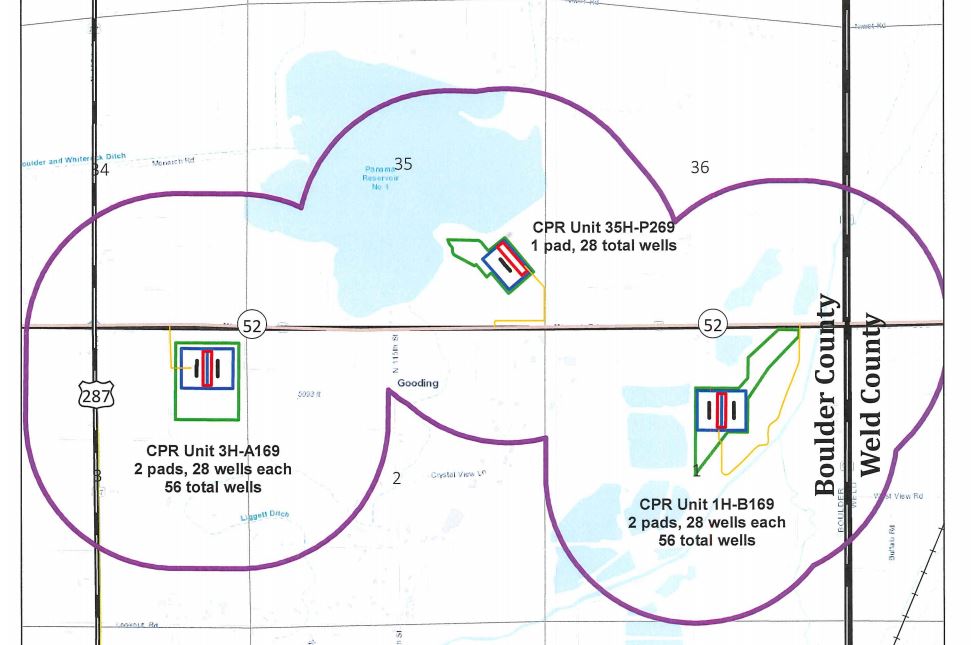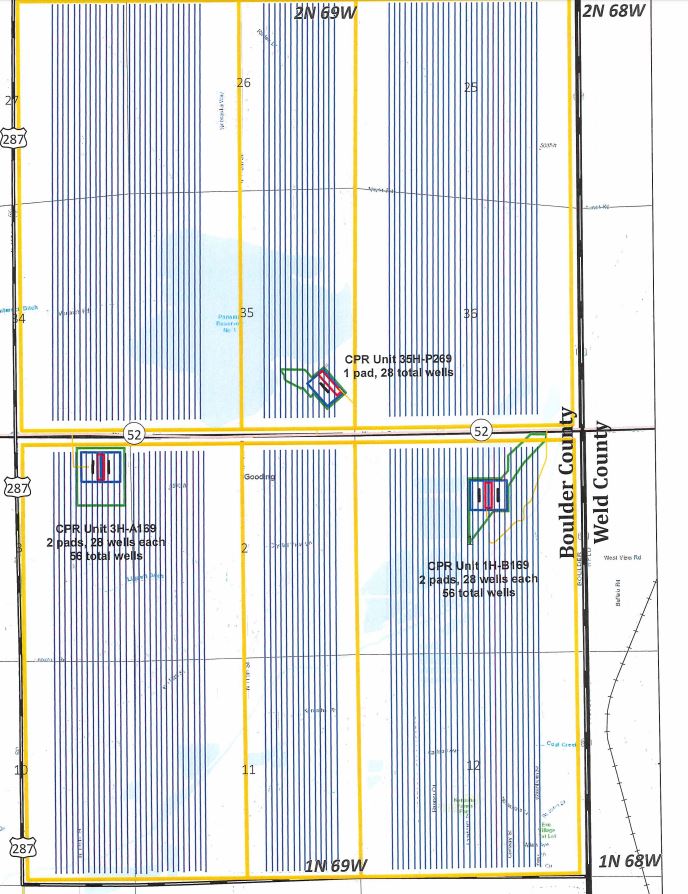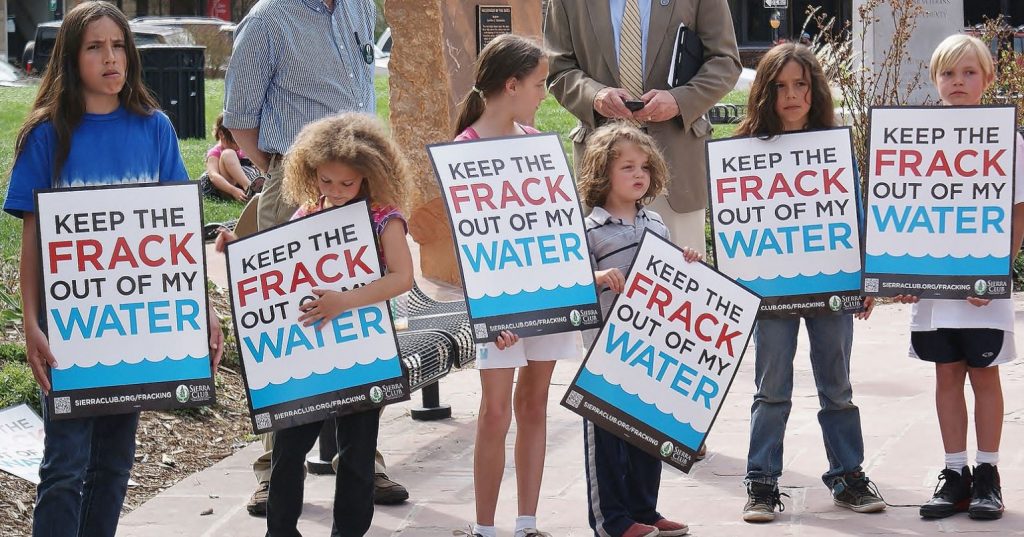Crestone Peak submits 4th Draft of Comprehensive Drilling Plan to COGCC
Crestone Peak Resources, the privately held DJ Basin operator that is developing Encana’s former assets in in Northern Colorado, is getting a little closer to planting its flag on three planned drill pads in Boulder County.
Developing the Encana DJ Basin assets
Crestone Peak was formed in 2015 through a joint agreement between the Canada Pension Plan Investment Board and Denver’s Broe Group to acquire the Encana assets in the DJ Basin. The sale included all of Encana’s DJ Basin acreage, comprising 51,000 net acres, according to the Canada Pension Plan Investment Board press release. The deal closed in 2016.
With ongoing production and operations in neighboring Weld County, and with the door now open to drill in Boulder County—following the expiration of a five-year moratorium on drilling and hydraulic fracturing—Crestone is committed to developing its assets in one of the most environmentally active counties in the U.S.
Crestone Peak’s proposal
Crestone said it is proposing three potential Oil and Gas Locations within the CDP (Comprehensive Drilling Plan) area, with five well pads.

Crestone said that all the drilling locations will be ‘tankless’, meaning there will not be permanent hydrocarbon storage tanks and the ancillary equipment required for onsite storage of hydrocarbons. Crestone expects to transport by pipeline, all liquids produced from the wells on these well pads to the Hub, located at the intersection of CR 6 and CR 7, in neighboring Weld County.
Referring to the highly debated siting of the Boulder County drilling locations in earlier drafts of its proposed comprehensive drilling plan, Crestone said the following in Draft number four, filed last week with the State of Colorado:
“Crestone conducted an in-depth review and alternatives analysis of the Potential Oil and Gas Locations noted on all previously submitted Attachment A’s as a result of numerous comments requesting such that all CDP potential Oil and Gas Locations to be located adjacent to Highway 52.
“Based on comments from the CDPHE, Town of Erie, Boulder County, COGCC and numerous citizens and citizen groups, Crestone concluded that three (3) Highway 52 potential Oil and Gas Locations (with five (5) wellsites), illustrated on the new Attachment A, can be utilized to develop the entirety of the CDP area in accordance with the Colorado Oil and Gas Conservation Act and also results in protections to the public health, safety and welfare.”

Long road to pump oil: drilling operations begin April 2020; completions start April 2021; production Jan 2022
Crestone outlined the timeline for the phases of development of its Boulder County assets:
- Planning and permitting (July 2018 – Dec 2019)
- Seismic studies and subsurface mapping (July 2018 – Mar 2019)
- Pipeline Construction (Jan 2020 – Jan 2025)
- Well Pad Construction (Jan 2020 – Mar 2024)
- Drilling Operations (Apr 2020 – Mar 2024)
- Completions Operations (Apr 2021 – Dec 2024)
- Interim Reclamation / Production (Jan 2022 – Jan 2052)
- Final Reclamation (Jan 2052 – Jul 2056)
The opposition’s complaints
The City of Boulder and Boulder County are both outspoken anti-oil and gas governments. The Boulder County Board of County Commissioners has exclaimed loudly against the idea of drilling and producing oil and natural gas from its lands, to the point of sending residents ‘warning emails’ that oil and gas companies are planning to cross the county border into Boulder County.
“We are taking steps to use every tool available to us, short of an outright ban, to help us address the detrimental impacts to our air, water, and quality of life from oil and gas development in Boulder County,” Boulder County Commissioner Deb Gardner said on the county’s website.

“For more than five years, the county commissioners have been seeking more local regulatory authority over oil and gas development, but those efforts have been continually thwarted at the state level,” Gardner said.
“The problem Boulder County is facing is that we don’t have the full authority to decide our destiny on the oil and gas issue – to decide what’s best for our county, for our environment, for our public’s health, or for our local economy. We have some authority, which we have used to write the strongest possible regulations we could, but it’s not all the authority we want or need to ensure the full protection of our residents and our world class environment,” said County Commissioner Elise Jones.
Boulder County says it is committed to undertaking a series of legislative, legal, environmental, and public health “fixes” to help minimize the impacts of fracing on people and the environment.
Persistent
However, Crestone Peak is a persistent company with a significant asset base and financially strong backers. It has chosen to go a new route that became available last year. It’s one that allows companies to work out specifics of a large-area drilling plan, including surface use details, noise, fumes, traffic, wildlife, vegetation and hundreds of other issues, by publishing numerous iterations, taking comments, republishing until all the aspects of the project have been aired in the open for all to see, long in advance of applying for and receiving state permits to drill.
It’s the Colorado Oil and Gas Conservation Commission’s (COGCC) comprehensive drilling program—the CDP.
In February 2017, Crestone Peak Resources said it had begun what it calls “the first step in a phased approach of re-entry into Boulder County.” Crestone Peak filed a Rule 216 Comprehensive Drilling Plan (CDP) Application with the Colorado Oil and Gas Conservation Commission.
Crestone said it believes the CDP is one of the best ways to put all the details in front of all the stakeholders. Those stakeholders, the company said, include the COGCC; Colorado Department of Health and Environment (CDPHE); Commission of Public Works (CPW); Colorado Department of Transportation (CDOT); Colorado State Land Board (CSLB); Boulder County, and affected surface owners.
“With more than 5000 acres of assets in Boulder County that Crestone (and our predecessor) has been prohibited in accessing for more than five years, we feel a CDP is the only way to approach development, particularly in this area,” the company said on its website.
Where the Crestone Peak CDP stands today
Crestone Peak submitted the fourth draft of its CDP last week to the COGCC.
The latest draft, which is just one short of the final draft, takes into account comments and requests made by stakeholders all the way through the first three drafts. Crestone Peak has made numerous changes to drilling density and proposed locations and has developed a plan that answers the concerns that were brought up during the public scrutiny, and addresses comments relating to the prior three iterations of the CDP.
In the fourth draft, Crestone addressed the benefits of going through the state’s CDP process.
“The expected benefits of an approved Final CDP to the Town of Erie and Boulder County include the following non-inclusive list of items which will evolve as this CDP process progresses:
- A comprehensive plan for oil and gas development for 10 square mile area in Boulder County
- Open and transparent planning process which involves government and citizen stakeholders from conception through final Commission approval
- Minimization of surface disturbance through the consolidation of multi-wells pads and facility locations for the development of the proposed CDP area and the use of existing state and county roads
- ‘Tankless’ locations by utilizing the Hub, Crestone’s central gathering facility in Weld County, for gathering all liquids from CDP well pads o Oil, gas and water pipeline infrastructure from each well pad
- Significant reduction in truck traffic because of pipeline infrastructure
- To the extent technically feasible and reasonably practicable, use of existing road and utility easements for the location of the oil, gas and water pipeline infrastructure
- Landscape scale mitigation planning to protect the environment, wildlife, and other natural resources
- Engineering review of all 95 current producing oil and gas wells within the boundaries of the CDP for potential plugging and removal
- Safety benefits of utilizing all “right-turns” from Highway 287 onto Highway 52, and then Highway 52 onto the access road for the potential Oil and Gas Locations on the south side of Highway 52
- Economic benefits from severance and ad valorum tax revenues from hydrocarbon production in unincorporated Boulder County”
Boulder’s stance
But starting early on, Boulder County has told Crestone Peak that instead of the state’s CDP process, the company needs to go through Boulder County’s permitting process first, before engaging in the permitting process with the COGCC or devising a comprehensive drilling plan. Crestone Peak pointed out that it is following state law for oil and gas extraction, which has no requirement to go through a county’s permitting process.
“Crestone has always maintained that the Commission CDP process governs Crestone’s oil and gas operations within the CDP Area and that the Commission has primacy over such operations under current Colorado case law, statutes and regulations. As such, Boulder County and Crestone have taken the position that they will “agree to disagree” on the primary jurisdiction aspects and proceed with conversations regarding certain aspects of the CDP,” Crestone said in its fourth draft.
Crestone Peak addressed other objections from Boulder County. Excerpts follow:
- “Boulder County has continually questioned Crestone’s information regarding its rights to drill within the CDP Area. … Crestone has verified and can confirm that it has the right to drill and produce certain of the minerals underlying the CDP. Boulder is requesting “actual proof” of Crestone’s right to drill and, without providing a confidential and proprietary title opinion outlining each detail of Crestone’s leases within the CDP, such proof lies in the attached publicly available leases.
- Boulder County has stated that “information in the Plan is inadequate on virtually every level and, consequently, impacts cannot be adequately. Boulder County’s statement stems from the fact that Crestone has not voluntarily placed Boulder County’s permitting process first, over the Commission’s primacy authority.
- Boulder County’s concerns with the use of Boulder County Open Space could be alleviated should Boulder County choose to engage in discussions and consultation with Crestone regarding the use of such space, as requested repeatedly from Boulder County citizens.”
Crestone Peak’s fourth draft
All of the documents and amendments associated with Crestone Peak’s fourth draft for its comprehensive drilling plan are available on the COGCC website here.







